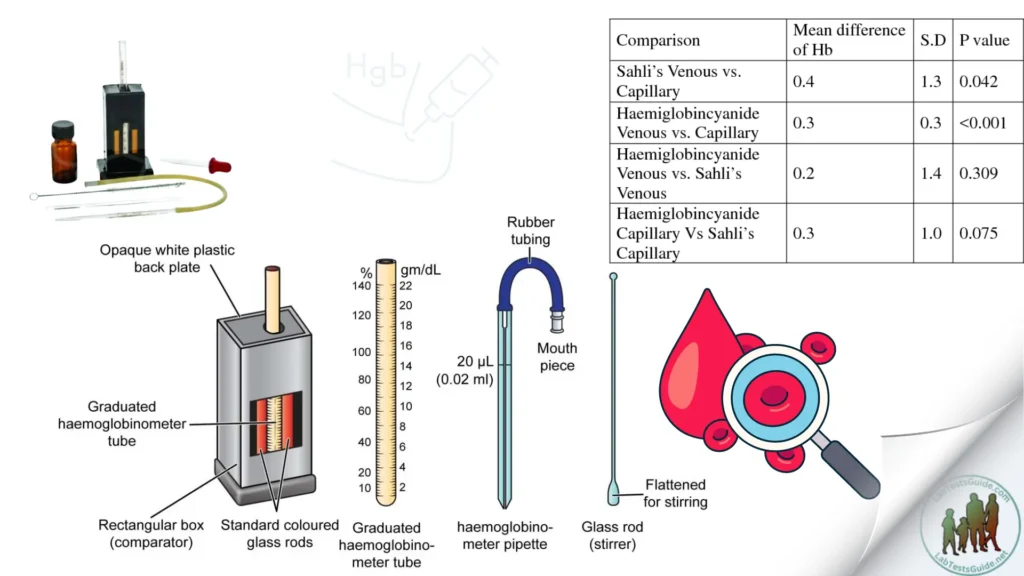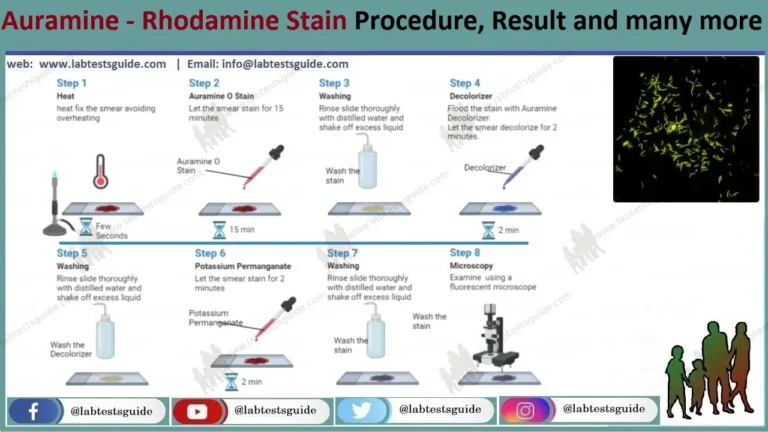Sahli’s method is a way to measure the amount of hemoglobin in your blood. Hemoglobin is a protein in red blood cells that carries oxygen throughout your body. This method is considered less precise than some newer technologies, but it’s still used in some places because it’s relatively simple and inexpensive.

The Sahli hemoglobinometer is a manual device that contains a hemoglobin tube, a pipette and a stirrer, as well as a comparator. Hydrochloric acid converts hemoglobin into acidic hematine, which is then diluted until the color of the solution matches that of the comparator block.
Principle:
Blood is mixed with an acid solution so that hemoglobin is converted to brown-colored acid hematin. This is then diluted with water till the brown color
matches that of the brown glass standard. The hemoglobin value is read directly from the scale.
Requirements:
- Sahli’s graduated hemoglobin tube (marked in grams percent g% (2-24) and percentage % ( 10 -140)
- Comparator with a brown glass standard. opaque white glass is present at the back to provide uniform illumination.
- Sahli’s pipette or hemoglobin pipette (marked at 20µl or 0.02 ml). No bulb
- Stirrer: Thin glass rod .
- N/10 hydrochloric acid
- Distilled water
Procedure
- After ensuring the hemoglobin pipette and tube are dry,add N/10 HCl into the tube upto mark 2g%
- Mix the EDTA sample gently and fill the pipette with 0.02ml blood. Make sure that no air bubbles enter into the pipette. If it enters, discard and pipette again. Wipe the external surface of the pipette to remove any excess blood.
- Add the blood into the tube containing HCl. Wash out the contents of the hemoglobin pipette by drawing in and blowing out the acid few times so that the blood is mixed with the acid thoroughly.
- Allow to stand undisturbed for 10min.( This is because, maximum conversion of hemoglobin to acid hematin, occurs in the first ten minutes )
- Place the hemoglobinometer tube in the comparator and add distilled water to the solution drop by drop. Stir with the glass rod till it’s color matches with that of the comparator glass. While matching the color, the glass rod must be removed from the solution and held vertically in the tube.( Note that the stirrer should be above the level of the solution and not out of the tube )
- The reading of the lower meniscus of the solution should be noted as the result. Express the hemoglobin content as g%.
Limitations:
- Sahli’s method is not as accurate as some newer methods for measuring hemoglobin.
- It can be subjective to match the color of the solution to the standard.
While Sahli’s method might not be the most up-to-date technology, it’s still a good example of how hemoglobin levels were measured in the past and can be helpful in understanding the basic principles.
OTHER PROCEDURES
Possible References Used







0 Comments